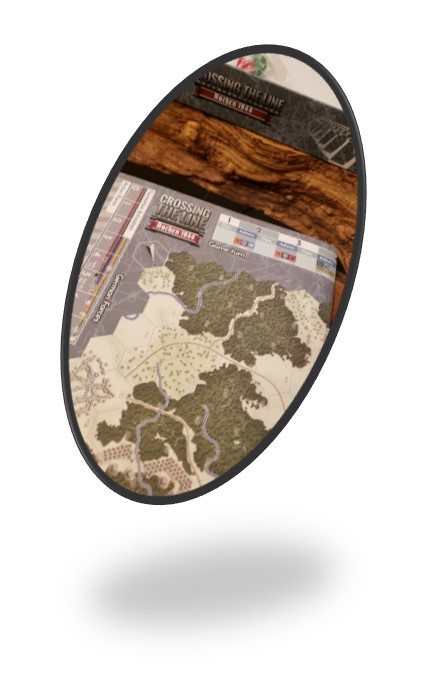
Please enjoy this guest review by Mike Willner from the Metropolitan Wargamers Association in NYC.
In late 1944 Operation Market Garden was winding down, having failed to accomplish its main objectives. The Allied high command thought a sudden powerful lunge at the Siegfried Line at the city of Aachen just might punch a hole. This would Allied armies to pour into the Ruhr basin, deprive the Reich of its main industrial base, and hasten the end of the war. Desperate German defenders fought tenaciously. By the time of the eventual German surrender in late October, Aachen was a wasteland of rubble and the Allied timetable for advance was disrupted by more than a month.

This is the grim situation simulated in Crossing the Line, a recent release by Furor Teutonicus. Game designer Dirk Blennemann, along with the developer Patrick Gebhardt, put together a game with very high graphic and component quality, a solid and engaging game system, and a lot of heart. Furor Teutonicus is a German company, so US players may not be aware of this game … I’m hoping this review will serve as an introduction.
Note: I’m told this is a remake or update of Piercing the Reich, but as I’m not familiar with that game I can’t and won’t’ try to make comparisons.
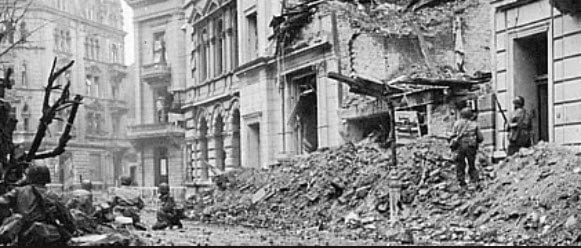
Summary:
Crossing the Line (CtL) is a one-map game which pits the more numerous and maneuverable Allies against a somewhat thinner line of great to low quality German troops dug in around Aachen. The players are in the role of Corps commanders, directing Formations (divisions, usually) to accomplish operational objectives; each Formation has a number of units representing the battalions. Formations activate a number of times each turn, and are allocated a variable number of Action Points used to move, attack, refit, dig in, etc.
Command control is exerted by HQs that limit the range of operation of the subordinate units. Supply traces back from HQs to sources along the board edges. Factors such as Combat Strength, Effectiveness, Tanks Points, AT Points and terrain will all have an impact. The Combat chit pull mechanic introduces significant variability in the combat odds, and results are applied as step losses, retreats and disruption.
To win, the Allies need to crack the line and get to specific geographic objectives to accrue victory points … the Germans have to stop them.
Components
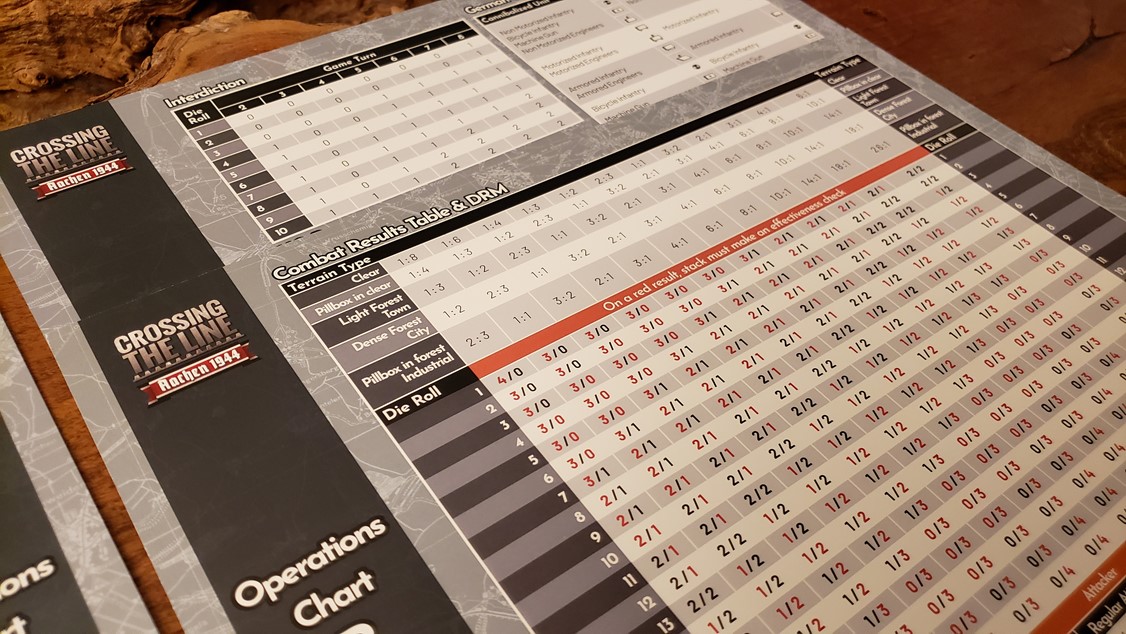
CtL comes with a generous supply of high quality play aids, with two copies of the key aids (CRT, TEC, etc.). They are sturdy, attractive, and clearly printed. The only quibble I’ll raise: The charts are color coded with a deep red (i.e. some results on the CRT are in red), which is indistinguishable to the color blind (like me). I had to copy the CRT and have my wife underline the red numbers … but since red/green colorblindness is so common it behooves game developers to factor this into their component design [rant ends here].
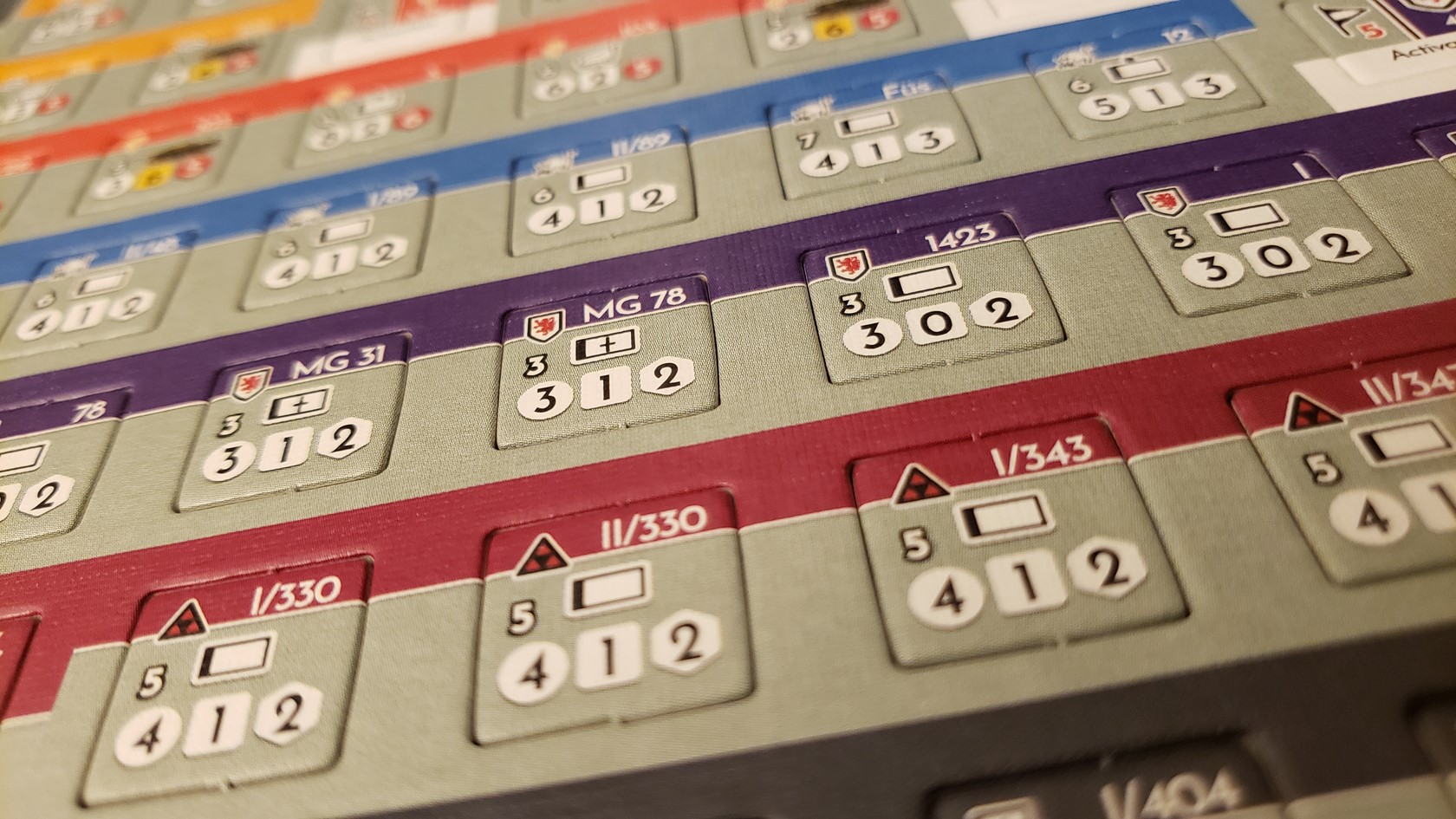
Counters are pre-cut, with the high printing and component quality we’ve seen in many European games. They can be punched out of the counter sheets with minimal or no nibbing (Note to counter-nippers: no nipping on these, they are clean corners and don’t require it!). The counter info display is very readable. The Formations are color coded (oh no, not another color-blind rant! …) *and* distinguished by the historical divisional emblem. Very easy to tell apart and keep organized. An outstanding fabrication.
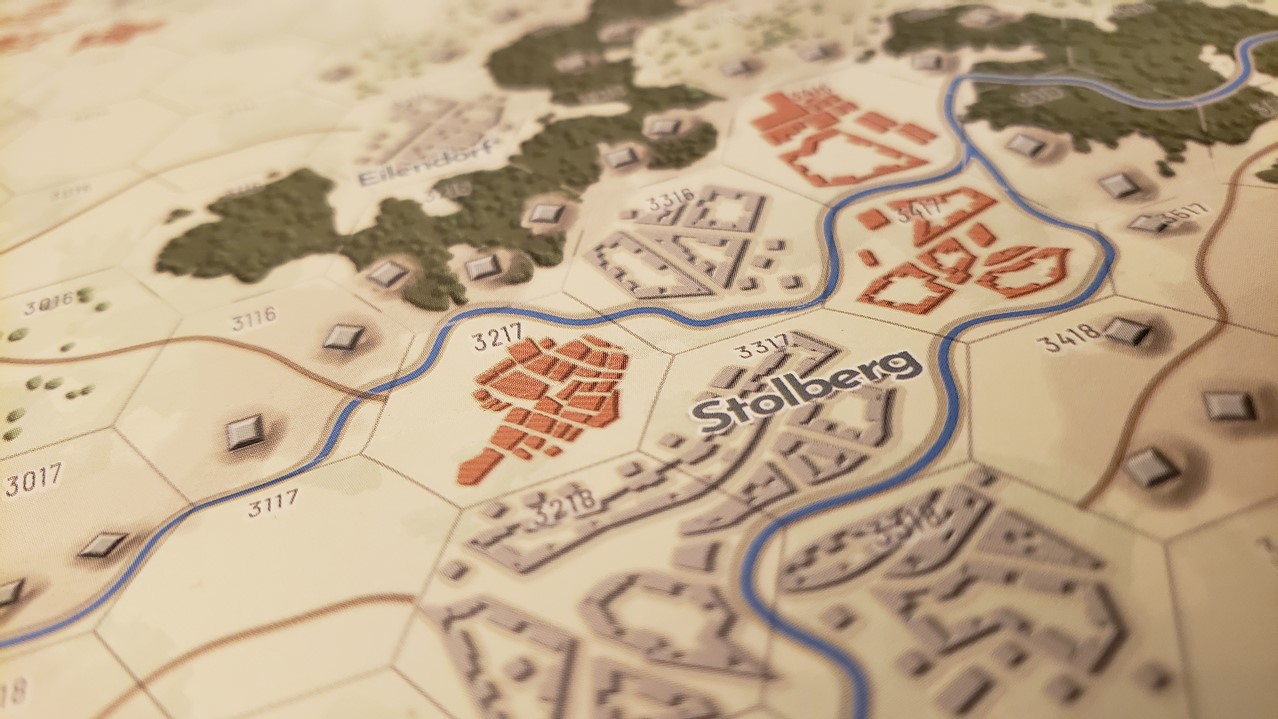
There’s one standard-sized map which is very pleasing to look at, quite readable from a terrain perspective, and has a nice period feel to it. US and Axis tracks are placed on opposite sides of the map for easy access. It’s a bit of a reach for the solo player but no big deal.
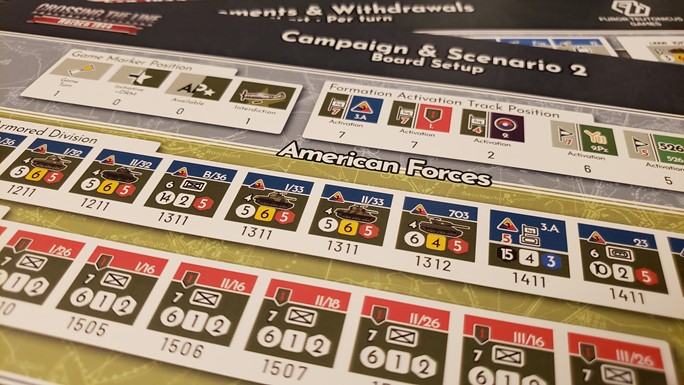
I’ll comment that a ‘quality war’ seems have broken out in the wargaming industry. More and more games are coming out with high quality counters, mounted maps and even mounted play aids (like Peloponnesian War). I think we have the European companies like Furor Teutonicus and Hexasim to thank for this, as they have set the standard for higher quality components.
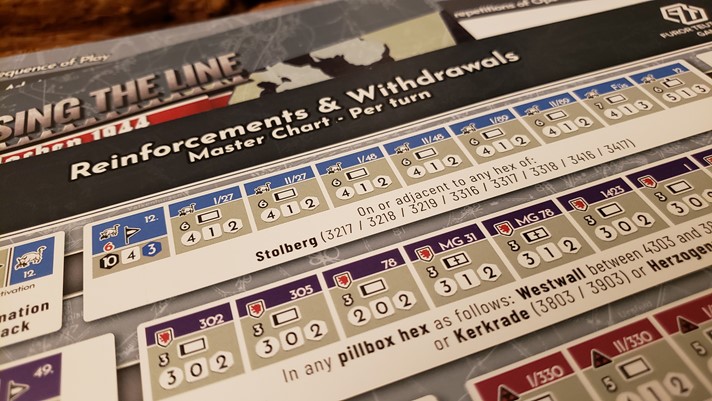
Game Mechanics:
Combat units (infantry, motorized infantry, armor, HQs) are organized into Formations (usually divisions), each with an HQ (e.g. 1st ID for the US, 9th Panzer Div. for the Germans). Each turn Formations are allocated a number of Activations based on overall Formation effectiveness. This defines how many times that Formation will get to take action (Activate) during a turn. (ranges between 2 and 7).
When a player Activates a Formation, they roll for the number of Action Points the Formation gets. What’s cool is that the number of Action Point you get is based on how many Activations you’ve taken. Your Formation may start with seven Activations, but each time you Activate they will be allocated fewer and fewer Action points … this is one of the cleverest implementations of degrading combat effectiveness I’ve seen. Order of play is governed by an Initiative roll, with a mechanic to make the loser of last turn’s Initiative more likely to win the Initiative this turn.
Action Points are expended to allow a stack of units to move, dig in, refit, or attack. There are three levels of attack (from Hasty to Prepared) that cost increasingly more Action Points but allow for better modifiers. You can Activate the same stack any number of times until you run out of Action Points. Additionally, the non-phasing player gets to try a ‘reaction’ Activation when you move into or out of their ZOCs (the higher the non-phasing Formation’s effectiveness, the more likely they will be able to react).
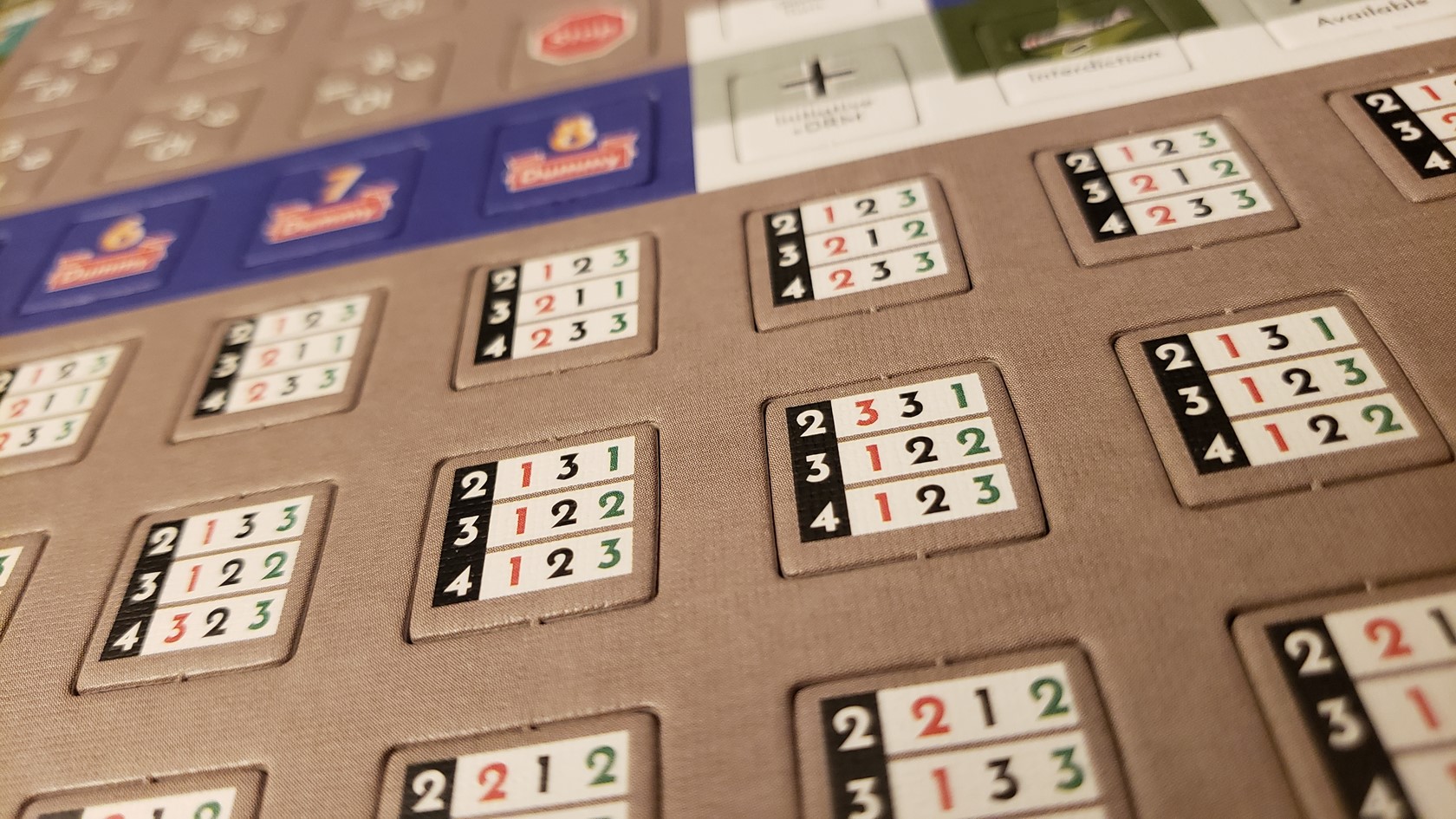
Oh yeah, did I mention that as the turns progress the overall availability of Action points decreases? There’s a lot of nuance in sequencing your moves and attacks. Action Points are the limitation, and they need to be used wisely.
Combat resolution starts with a simple strength point comparison but then introduces numerous variables. First, you get to apply HQ support and multi-unit combat support (but only for the more expensive attack modes). Armor and AT points add more modifiers. So does terrain.
Then there’s a chit pull that provides a multiplier for your combat strength based on your mode of attack or defense, and the effectiveness rating of each unit. Each unit’s strength can be multiplied up to three times! I admit to being a bit perplexed by some of the chits that gave very high multipliers for Hasty attacks and Disrupted defenders, making attack results very unpredictable … but the idea is to introduce a bit of chaos, so there it is. Combat results are applied as step losses and retreats.
There are four scenarios. The first is a very simple intro tutorial just to get the hang of the mechanics. The next two cover the opening and closing stages of the battle respectively, and there is a campaign that covers the entire battle. The US player accrues victory points for controlling key objectives (cities and towns, mostly), and killing German units. The campaign introduces an interesting twist where the US player has secret ‘victory plan’ which sets variable objectives.
Game Play:
In a word: Absorbing.
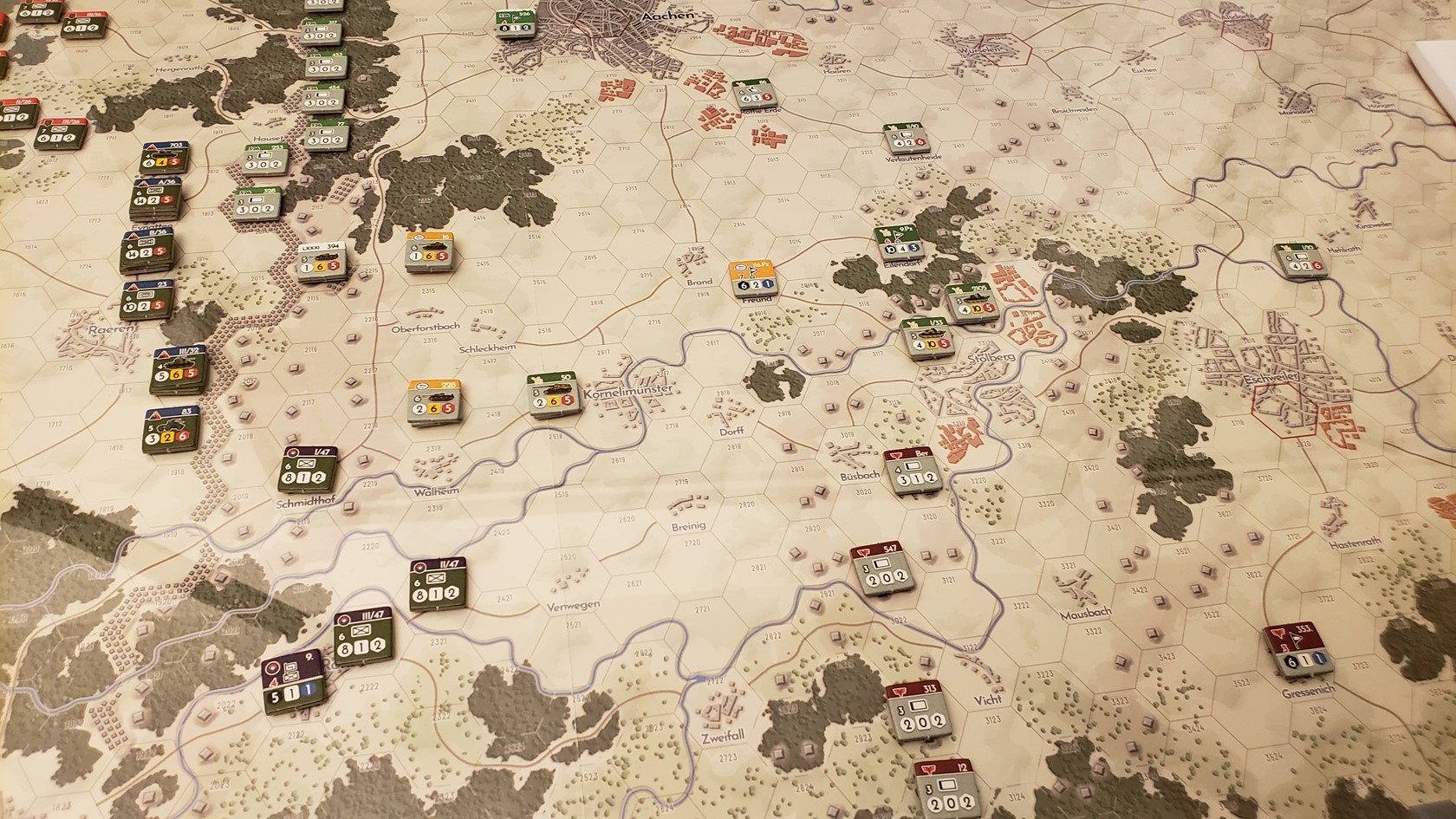
Just bashing forward with the US units, powerful and more numerous as they are, simply won’t work. The Germans can react, dig in, shift around the few powerful Formations they have to counter punch, and hold on. You’ll need to devise a plan that forces them to thin out the defense, then punch through a chosen sector. Dwindling Activation and Action Point numbers and increasingly stiff defense will require skill and forethought.
The German player needs to be that guy who always plays the Russians in Barbarossa games, or the French in France 1940 (or 1914) games … or the goalie on a football or hockey team! You’ll be deflecting, rushing scarce reserves to plug up holes, staging fighting retreats, and trying to time your fall back so you don’t give up too much too soon. You do get some powerful Formations, but they are in demand in three places at once. It’s a real challenge.
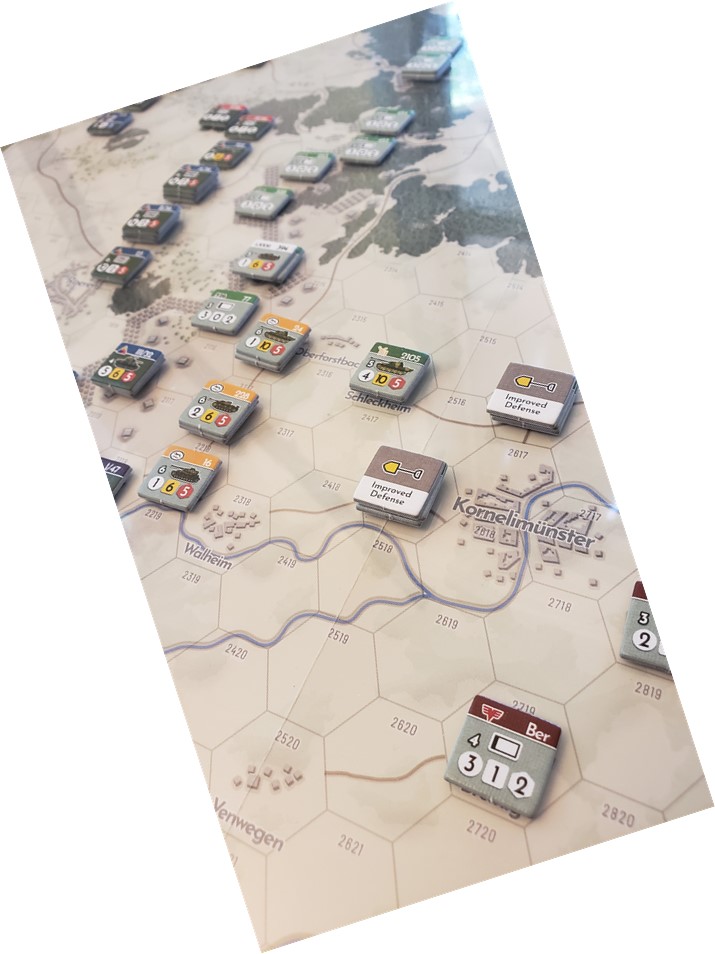
This game is outstanding for solitaire play as well, one of the best I’ve played. The company rates it 8 out of 10 … I’d rate it 10 out of 10. With so many variables around activation, actions, combat strength etc. you will experience surprise, frustration, dismay, and triumph depending on how the dice and chits fall. Also, with the alternating activation system you can leave it set up and just do a few activations at a sitting.
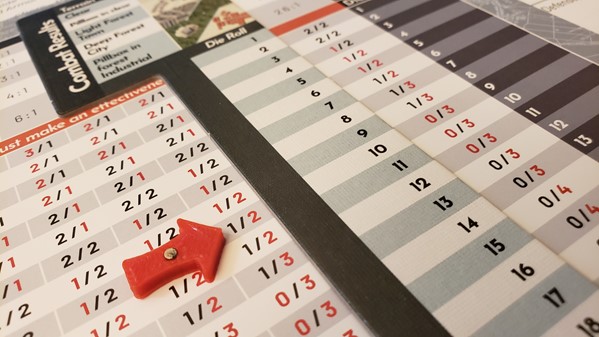
Overall, I’m very impressed with Crossing the Line, and with the responsiveness and friendliness of the crew at Furor Teutonicus. The game hits a lot of high points for component quality, game design, game play and solitaire play. The few quibbles I have are pretty minor and don’t detract (at least for me) from enjoying this game. If you are at all interested in WWII battalion-level combined arms combat with an operational layer, then I strongly recommend Crossing the Line.
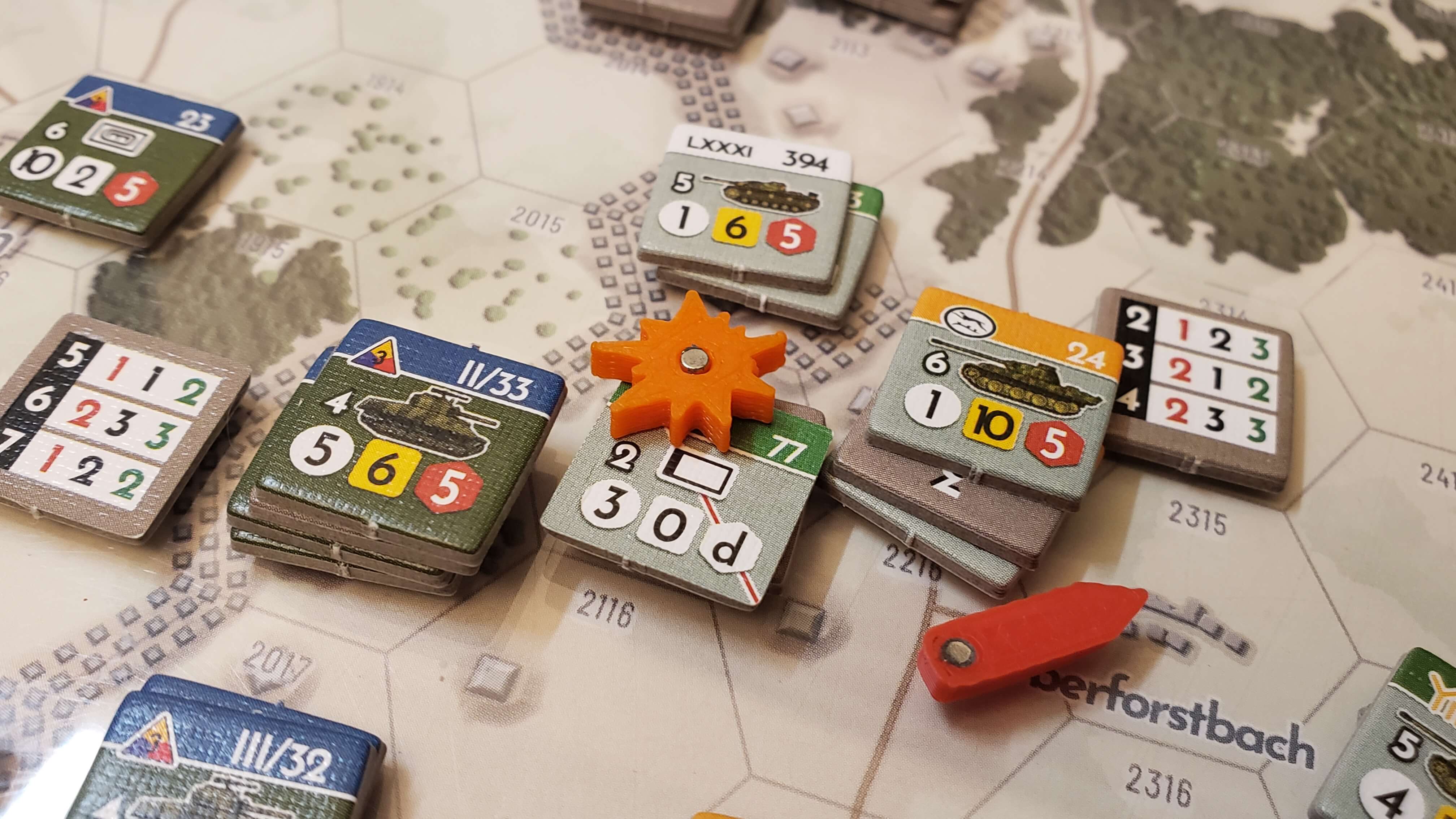
Excellent review! I think I may have to get this game now, though I already own the previous Piercing the Reich (as yet unplayed). The activation mechanic and choice of attack intensity sounds almost identical to the system Joe Balkoski invented for his St-Lo (West End Games, 1984). That game is an often-overlooked gem, and many players have said it was a shame that the system didn’t get used more often in games after that.
Great detailed review- itching to play it now
Thanks for reading!